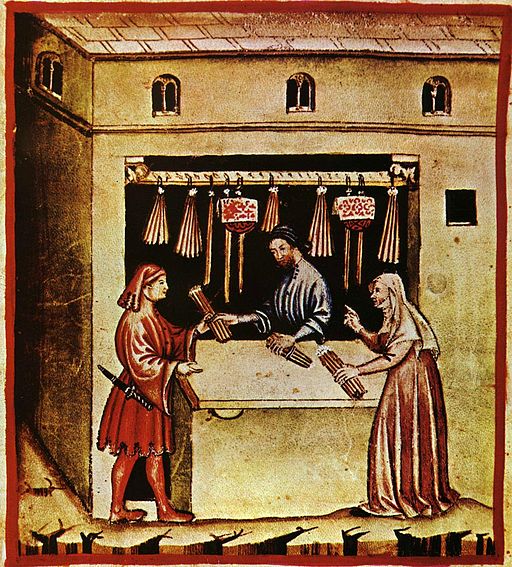These days, we burn scented candles because we love them. Their fragrance fills our homes, and that warm little point of light can be cosy, romantic or festive. However, you don’t have to go back many generations to find candles as everyday items in every home and workplace. We take a look at the history of the candle, from gift to household essential and back to gift again.
Roman Candles
The typical Roman household used oil lamps rather than candles, as olive oil was cheap and plentiful. We can still add candles to the long list of things that “the Romans have done for us”, as they were probably the first to create a recognisable candle (around 500 BC).
They were made from tallow, which is rendered animal fat. Tallow candles certainly have a strong aroma, but not in a good way! (In ancient India, cinnamon was added to give a pleasant aroma – the first scented candles?) Despite the smell, candles were regarded as luxury items. They were Roman status symbols, and were given as gifts.
The Growth Of Candles
When the Roman Empire fell, so did the ready supply of oil across Europe. Candles became the default source of light, and the “chandlery” trade developed (chandlers were craftsmen who made candles, among other things).
Consumers had two main choices: tallow candles, which were cheap but dim and smelly, or beeswax, which burned cleanly, but was prohibitively expensive for most. Candles were one of the essential items that divided the population into the “haves and have nots”, and continued to do so for generations. If you were really poor, you’d probably be burning a “rushlight”, made from a rush coated in layers of animal fat. They were long and skinny, and burned for about twenty minutes.
Then in the eighteenth century, whalers discovered a substance inside the sperm whale’s head, which they named spermaceti. A single whale could provide up to four tonnes of this waxy substance, which was white, odourless and burned cleanly. Candles became cheaper to produce, and far less smelly – although at an unacceptable cost to these incredible animals.
Mass-Market Candles
But even spermaceti couldn’t light our growing nation, and the expanding UK population needed a lot more candles. There were two key nineteenth-century inventions that enabled supply to keep up with demand – and kept the costs down.
In 1834, a pewter worker named Joseph Morgan designed a machine that could make up to 1500 candles per hour. Then in the 1850s, chemist James Young devised the process for extracting paraffin from oil and coal. Stearin (a processed fat from animals, like tallow but without the stinky glycerin content) was added to increase the melting point. Candles were now cheap, could be made in bulk, and burned for longer.
The world would still seem incredibly dim to our modern eyes. Mirrors were used to reflect candle light, and the Georgians had favoured pale colours and plenty of windows to increase their lux levels. The Victorians took a different approach: mirrors were still used, but decor became darker, partly to hide all the sooty stains from the paraffin.
And along came Edison and his commercially-viable incandescent light bulb… It would be a while before many households could afford electricity; however, many switched from candles to kerosene lamps or had gas installed. Candles still featured in religious celebrations, festive decorations and on birthday cakes but, in terms of domestic use, candles were gradually snuffed out.
Contemporary Candles: Back To Nature
We’ve come full circle, and returned to the time of ancient Rome. These days, we have our everyday source of light (electricity), while candles are a luxurious addition, given as gifts and used to decorate and scent our homes. However, the idea of candles being burned for their fragrance would have made a medieval peasant choke on his mead!
Paraffin brought light to millions; but modern candle makers are returning to greener forms of wax. Soy wax and beeswax are two of the natural waxes used for modern candles; and at Dexter & Mason, we love the clean burn of soy wax.
Now that we “chandlers” aren’t responsible for lighting the nation, we can focus on the elements of candle making that our customers want: natural ingredients, a clean burn, and quality, lasting scents. Have a look at our collection of scented candles, made with our small-scale and sustainable approach.


